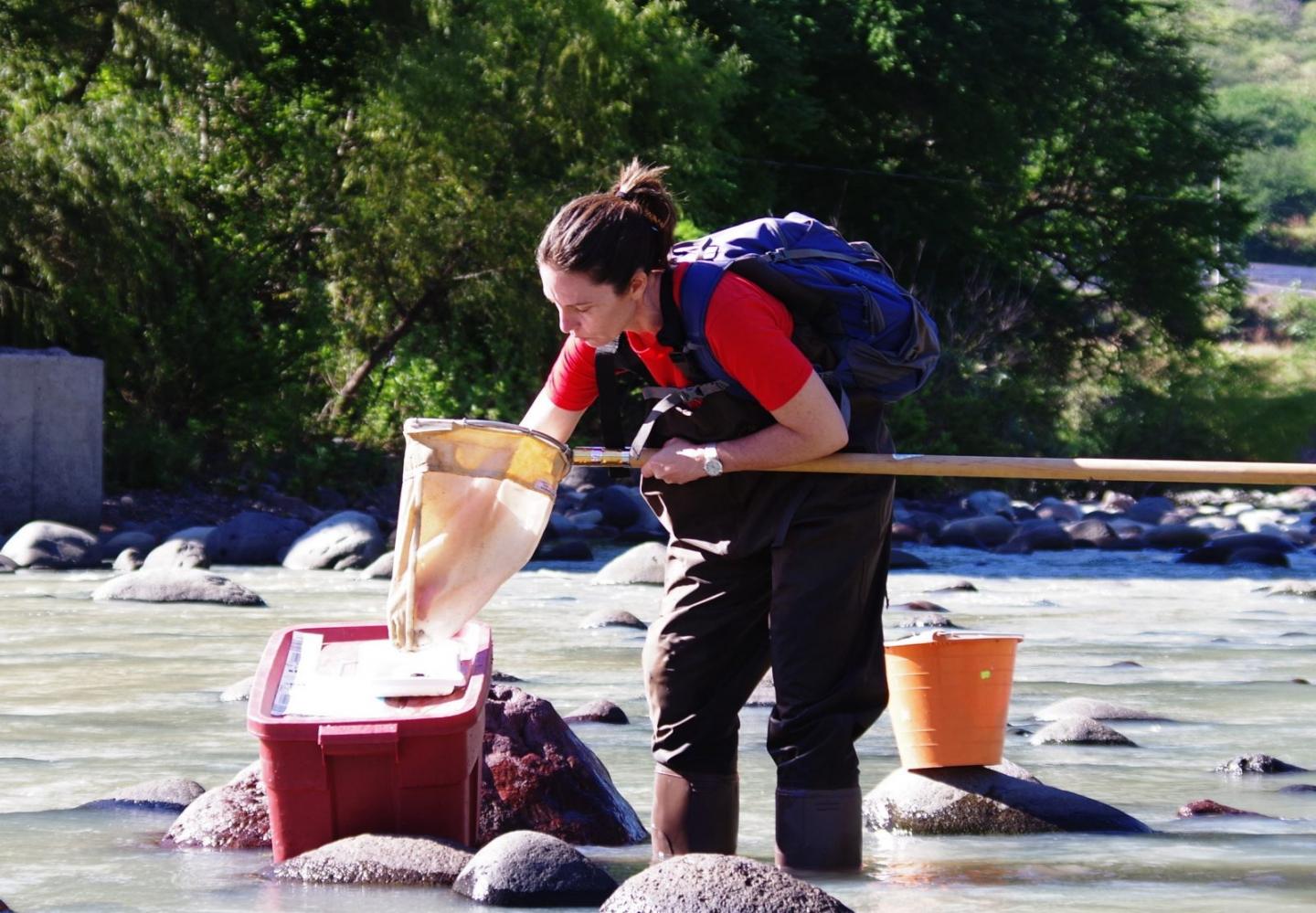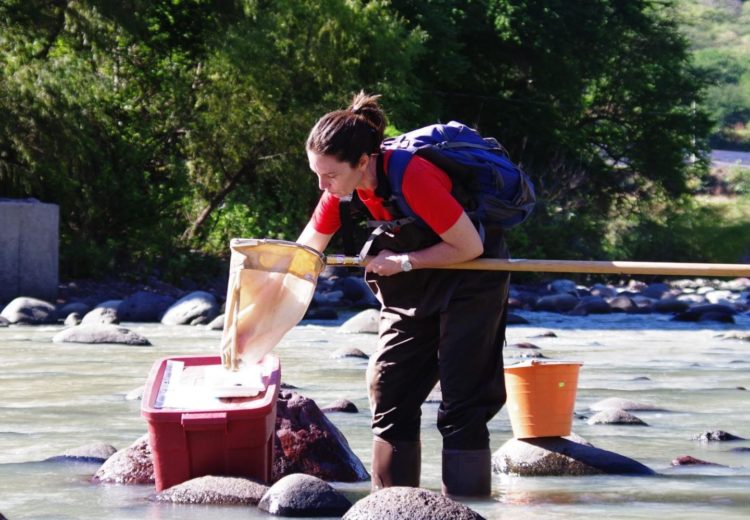
Credit: Virginia Tech
Mayflies have long been indicators of the ecological health of the lakes, rivers, and streams. The more mayflies present in water, the better the water quality.
But scientists from Virginia Tech and the University of Notre Dame recently discovered that a particular species — the burrowing mayfly — had a population decrease of nearly 84 percent from 2015 to 2019. The measurements, using radar, took place during the annual insect emergence events at Lake Erie, when the transition of almost 88 billion insects moving from the waterways to the air marks one of world’s largest annual insect emergence events.
Although it was previously impossible to analyze the emergence of the burrowing mayfly, researchers were finally able to do so by using meteorological radar data and new methods in tracking the presence of airborne creatures. By observing the swarms on a year-to-year basis, the data showed a shockingly simple trend: over the same timeframe and time of year, the mayfly swarms are growing smaller.
“This refined radar technology that allows for tracking and quantifying aquatic insect populations at such a large scale is instrumental in understanding land-water connections,” explained Sally Entrekin, an associate professor in the Department of Entomology in the Virginia Tech College of Agriculture and Life Sciences.
The finding speaks to more than just the mayfly’s decline: It highlights the growing problem of insect decline and the cascading effects that has on ecosystems around the world.
“Radar technology — coupled with traditional field sampling — can start to address the scope and magnitude of insect declines from global change in aquatic ecosystems,” said Entrekin.
Entrekin and her colleagues, Phil Stepanian, Charlotte Wainwright, Djordje Mirkovic, Jennifer Tank, and Jeffrey Kelly, recently published their findings in the Proceedings in the National Academy of Sciences.
The emergence is visually spectacular (where the skies are darkened by the shear mass of flying insects), but this event also represents a new availability of food for many creatures throughout the food chain, providing more than 3,000 tons of insects for consumption by birds and other land-based plants and animals.
Fish, birds, bats, and other animals consume the mayflies as a source of food and nutrients. Some insect-eating birds in these areas have synchronized breeding habits that coincide with mayfly emergence, and they rely on them as a high-quality food source for their young. These bird populations have also taken a downturn, which has been partially attributed to the lack of insects to eat, particularly aquatic insects.
Historically, negative human impacts on mayfly habitat has led to reductions and disappearances of the mayfly swarms. While conservation and habitat rehabilitation have helped to clean up the waterways and bring back the mayflies, in the Mississippi, Ohio, and Illinois rivers, as well as Lake Erie, efforts to bring back the mayfly swarms took nearly 20 years to reach their previous levels. As the research shows, it appears the swarms are once again declining.
Multiple stressors in these waterways attributed to human activity could be a reason for the reduction in mayfly populations. A warming climate puts more stress on certain aquatic environments, leading to decreased oxygen levels, which can result in fewer mayflies coming out of the water. Runoff from rivers into the warmer surface waters of Lake Erie, for instance, can cause algae blooms, which release toxins that these mayflies are especially susceptible to.
Another type of runoff from agricultural land carries commonly applied pesticides, particularly neonicotinoids, which can kill mayflies as immatures in the water. Even when these pesticides are present in nondeadly levels, they can negatively affect mayfly young by stunting their ability to reach adult stage. Many of these factors likely contribute to the decreasing mayfly populations, and policy and conservation efforts will be needed in order to change this trend.
Global insect population decline is an emerging topic that has sparked public awareness, however there are logistical challenges to analyzing these trends. Monitoring the life-cycle of the burrowing mayfly and other aquatic insects offers an early warning system for changes in our ecosystems.
This monitoring system is also applicable in other parts of the world where large aquatic emergence events occur, and it can be useful in pinpointing regions that would benefit from waterway conservation efforts or ecological rehabilitation efforts. With the impact the climate crisis is having on ecosystems, tracking the emergence of certain aquatic insects could serve to motivate and inform the public as to the effect humans are having on their local waterways.
###
Media Contact
James Mason
[email protected]
540-231-6826
Original Source
https:/





